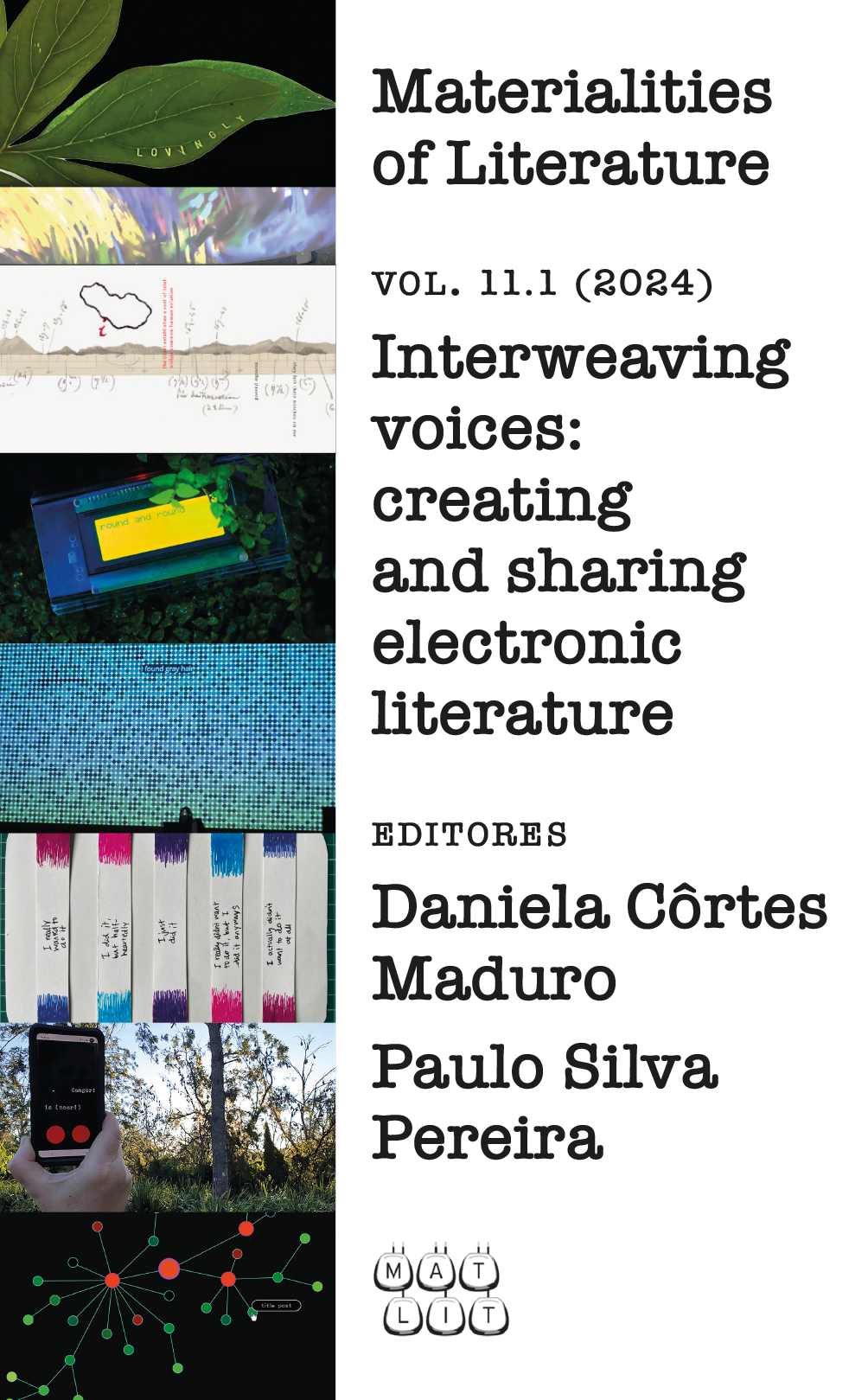Fulldome Immersive Modalities and Materiality: Toward A Poetics of the Firmament
DOI:
https://doi.org/10.14195/2182-8830_11-1_6Keywords:
fulldome, climate change, migration, hypertextAbstract
The fulldome projections at the Exploratório’s Hemispherium in Coimbra, as part of the Electronic Literature Organization’s (ELO) conference, highlighted the social-technology of fulldome projections and a new genre of e-lit. The examples presented addressed the issues of the conference specifically: interconnected global climate and migration flows and crises; animal perspectives on human exploitation; challenge of sign language systems; and Portuguese language and literature. These examples also allude to a pre-history of the dome modality from ancient buildings to church domes to expanded cinema’s movie-dromes. Analogous to hypertext which lead to early e-lit, planetariums’ domes function as a new mode and communal space for e-lit and knowledge production. The essay concludes with a discussion about teaching fulldome productions and a proposal of a poetics of the firmament; the fulldome can create immersive visualizations and soundscapes of e-poetry, stories, data, and more at every college and university.
Downloads
References
CUBA, Larry (1979/2023). Two Space. United States: Independent.
DAUT, Michael (2020). “Fulldome Storytelling: Embracing the Dome’s Uniqueness.” Planetarian 49, no. 2: 2–37.
FRENCH, Michaela and KENTBYE (2022). “#1041: [DocLab] Michaela French’s Immersive Dome Experiments & Full Dome Creative Network.” Voices of VR. https://voicesofvr.com/1041-doclab-michaela-frenchs-immersive-dome-experiments-full-dome-creative-network/. Accessed Oct.17 2023.
FRENCH, Michaela and Adrian Lahoud (2019). Climate Crimes. United Kingdom: Independent.
FULLDOME Creative Network, https://fulldomecreativenetwork.com. Accessed Oct. 17 2023.
FULLDOME Database. https://www.fddb.org/. Accessed Oct. 18 2023.
IMERSA. https://imersa.org. Accessed Oct. 18 2023.
MONET, Claude (1915). “Water Lilies.” The Museum of Modern Art, New York.
NORMAN, Don (1988). Design of Everyday Things. New York: Basic Books.
RAMOS, Pedro Rodolpho (2021). Saravá. Berlin: Diversion Cinema.
SAPER, Craig and Lynn Tomlinson (2023). Global Reading Supplement. United States.
SHEDD, Ben et al. (2022). 60-50 IAIA. Santa Fe, Mexico: Institute of American Indian Arts.
TOMLINSON, Lynn and 150 collaborators (2019). Aqua Dome. United States.
TOMLINSON, Lynn (2020). Reverie de Giverny. United States.
TOMLINSON, Lynn and Diana Saez (2023). Ignite! United States: Towson University.
TOMLINSON, Lynn and Craig Saper (2023). CoDomeDigo. United States: Independent.
YOUNG, Millicent Margaret Amanda Jane (2020). Immersive stories: how can an “independent avant-garde, experimental filmmaker with a self-conscious auteur’s perspective” create effective narratives in the 360º paradigm? Dissertation, Silpakorn University.
YOUNG, Millie (2020a). Elephant Elephant Elephant. Thailand: Independent.
YOUNG, Millie (2020b). “An experiment in putting an ardent hand-crafted 2D animator into the heady dimension of the non-linear world of 360 and seeing what floats.” 2020 CONFIA Conference Proceedings: 1. https://www.academia.edu/50259559/An_experiment_in_putting_an_ardent_hand_crafted_2D_animator_into_the_heady_dimension_of_the_non_linear_world_of_360_o_and_seeing_what_floats. Accessed 13 Oct. 2023.
Downloads
Published
How to Cite
Issue
Section
License
Copyright (c) 2025 Craig Saper, Lynn Tomlinson

This work is licensed under a Creative Commons Attribution 4.0 International License.
MATLIT embraces full open access to all issues. Authors who publish with this journal agree to the following terms:
- Authors retain copyright and grant the journal right of first publication with the work simultaneously licensed under a Creative Commons Attribution- 4.0 International (CC BY 4.0) that allows others to share the work with an acknowledgement of the work's authorship and initial publication in this journal.
- Authors are able to enter into separate, additional contractual arrangements for the non-exclusive distribution of the journal's published version of the work (e.g., post it to an institutional repository or publish it in a book), with an acknowledgement of its initial publication in this journal.
- Authors are permitted and encouraged to post their work online (e.g., in institutional repositories or on their website) prior to and during the submission process, as it can lead to productive exchanges, as well as earlier and greater citation of published work (See The Effect of Open Access).
- A CC licensing information in a machine-readable format is embedded in all articles published by MATLIT.
- Attribution — You must give appropriate credit, provide a link to the license, and indicate if changes were made. You may do so in any reasonable manner, but not in any way that suggests the licensor endorses you or your use.
- No additional restrictions — You may not apply legal terms or technological measures that legally restrict others from doing anything the license permits.
Notices:
- You do not have to comply with the license for elements of the material in the public domain or where your use is permitted by an applicable exception or limitation.
- No warranties are given. The license may not give you all of the permissions necessary for your intended use. For example, other rights such as publicity, privacy, or moral rights may limit how you use the material.




